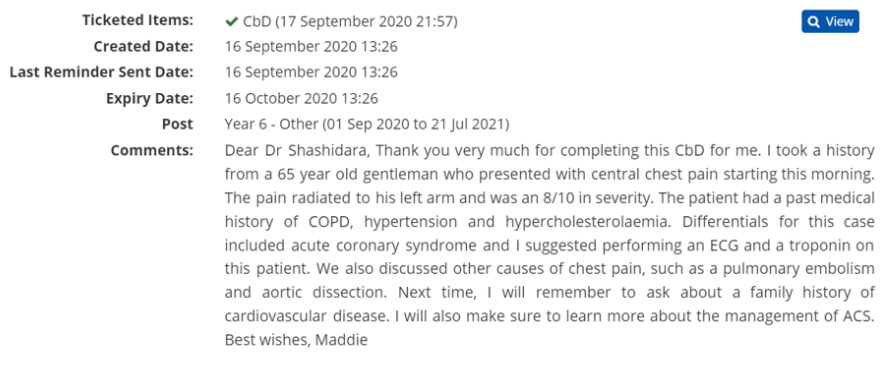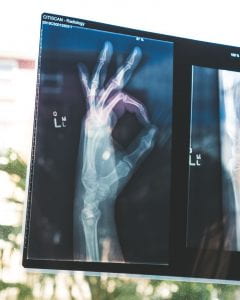Read time: 6 minutes
In this post, Maddie Wigmore-Sykes, a final-year medical student, breaks down the stages of the UK Foundation Programme (UKFP) application process.
Applying for my first job as a doctor filled me with equal parts excitement and dread. Navigating the UKFP website, working out where all the tabs were on Oriel and keeping up with the many deadlines can get a bit overwhelming. Never fear though, as here is our realistic (and slightly lengthy) guide to the UK Foundation Programme. Keep reading for further details on how to get each section done – dates provided are for 2022 starters!
For those of you who, like me, didn’t have a clue how any of this works, here’s a brief overview of the application process:
-
- All foundation programme jobs in the UK are applied to via an online platform called Oriel
- Your university nominates you at the start of your final year as eligible to apply for the programme and Oriel will contact you to create an account and fill in your relevant details for your foundation programme application
- You can also choose to apply for an academic foundation programme (AFP) or a foundation priority programme (FPP) at this point (further blog posts on these incoming…)
- In order to somehow stratify thousands of applicants, the UKFP uses the Situational Judgement Test (SJT), an ethics exam designed to “test the attributes needed to work as a foundation doctor”. Your SJT score gets combined with points you’ve accumulated from your decile and any additional academic qualifications for a grand score out of 100 (the good news is that you get 34 points for the medical degree – phew!)
- As part of the application, you must rank where in the country you want to go for your first job
- Oriel then matches you to an area based on your preferred locations, highest scorers first, and once you know where you’re going, you can rank the individual jobs – easy, right?
National Application Window (8th – 22nd September 2021)
It’s really important you don’t miss the deadline for national applications. This is where you will fill in all your details onto your Oriel account, including any additional qualifications or publications that may get you some extra points for 2022 entry (apologies to our 2023 starters who will be affected by UKFPO’s new guidance). Make sure to find your degree certificate early – you need to prove you have that iBSc!
The team at Oriel will then verify your additional educational achievements and provide you with an educational performance measure (EPM) score out of 50. For further information on how this works, check out the UKFP FAQs here.
SJT Booking Window (4th – 7th October 2021)
Another date to add to your diary is the deadline for SJT booking. You do this via the Pearson Vue website and can choose to sit the exam at a local Pearson Vue centre or at home with an online invigilator. You will be able to sit the SJT between 7th – 19th December 2021 and 18th – 23rd January 2022.
Preparing for the SJT is difficult, it’s designed to be hard to revise for. There are official practice papers here, which give you an idea of the style and content the exam covers, which is mainly the contents of the GMC’s Good Medical Practice. Private SJT courses are advertised in the run-up to the exam, but these are by no means necessary to get a good score. Your SJT score gets scaled across the rest of the country into a mark out of 50 so is worth the same as your EPM score.
A further blog post on preparing for the SJT is in the works – watch this space!
Location Preferencing (deadline TBA – last year’s deadline 18th February 2021)
As part of the application process, you will have to pick your location preferences for where you want to work. For this, the UK is split into 20 different foundation schools, some as large as Wales and Scotland, while London and the surrounding area is split into three different schools. Deciding where you might like to start your career is really exciting; you might want to stay in the place you studied, move closer to home or try somewhere completely new.
Unfortunately some foundation schools are more competitive than others, so it’s worth ranking all the options just in case. The schools do release cut-off scores from previous years, but they tend to fluctuate so take them with a pinch of salt.
You have a lot of time to think about this, so don’t panic.
National Allocation (10th March 2022)
This is the day where you will find out where you’ll be working and Oriel will inevitably crash just as you’re about to log in. You’ll also get your SJT score so you’ll have more of an idea of how you’re ranked. It isn’t always good news for everyone, but there are excellent hospitals in all areas of the country and a lot of really good jobs!
The application process now changes slightly depending on which foundation school you have been allocated to. In the smaller areas with only a few hundred jobs to rank, you go directly into the programme preferencing stage, where you rank as many jobs as you want based on location and specialty. This requires either a complicated spreadsheet or a lot of flashcards. Bigger schools, such as South Thames and North West England, have a group matching stage first where you pick individual regions or trusts first. Once you’ve been matched to the smaller group, you can then rank the jobs as above from a much more manageable pool.
For one-stage preferencing, the deadline is 31st March 2022. For two-stage preferencing, the group preferencing deadline is 16th March 2022 and the programme preferencing deadline is 31st March 2022.
Match to Programme Results (7th April 2022)
You’ll find out where you’ll be working and what specialties you’ll be doing and it will all suddenly feel very real! Most programmes have a really good mix of surgical, medical and community placements so whatever you end up with, you’ll get some great experience.
Good luck with your applications and let us know if you have any questions in the comments!


